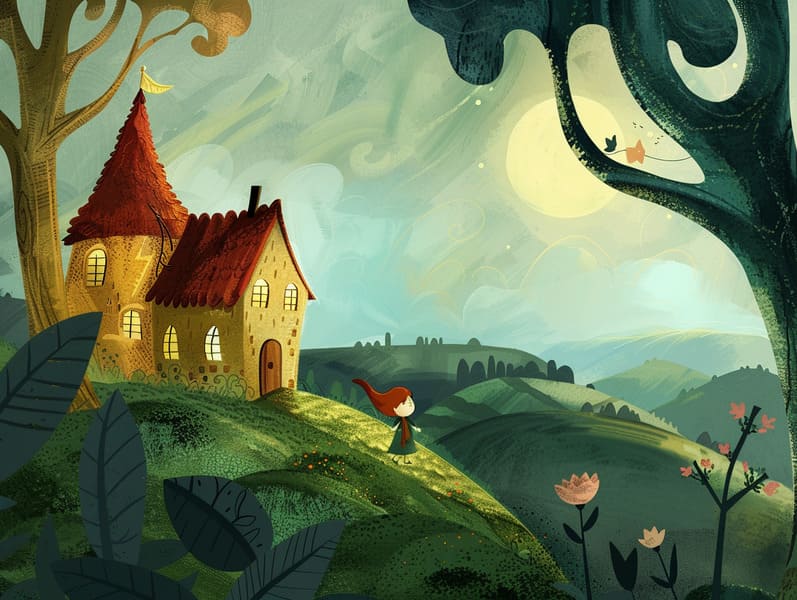
Popular fairy tales have timeless appeal. These narratives have been conveyed from one generation to the next millennia before they were ever published. They were born from a variety of cultures, including American traditions. They were initially shared among older generations, often carrying themes and messages aligned with the societal norms and beliefs of the time.
The Grimm brothers, the two Grimm brothers, were among the first to compile and release many of these beloved tales. Their collection, "Grimm's Fables," included narratives like "Cinderella," "Hansel and Grethel," and "Schneewittchen," which have since become staples in the world of famous fairy tales. Similarly, Hans Andersen's fanciful tales, such as "The Sea Maid," and "The Duckling's Story," have floated into hearts worldwide, solidifying their place in the pantheon of famous fairy tales.
Despite being ancient, these tales remain as significant as ever, especially as bedtime stories for kids. These charming stories are now available in numerous formats, including artistically illustrated books, magical animations, and digital fairy tales.
Their enduring popularity can be connected to several magical reasons:
Life Lessons: Traditional fairy tales often offer important moral lessons. Narratives like "The Wolf and the Liar" teach the importance of truth, while "The Tortoise and the Hare" demonstrate the values of persistence and unpretentiousness. These stories offer kids clear distinctions between truth and falsehood, developing their moral compass in a soft yet significant way.
Kindness and Comprehension: Ancient fairy tales frequently portray beings facing trials and tribulations, prompting listeners to identify with their struggles and champion their triumphs. For instance, "Beauty's Beast" points out the value of valuing inner qualities to perceive the inner spirit of a soul, enhancing compassion and recognition.
Cultural Recognition: Many classic fairy tales are interwoven with the cultural contexts from which they grew. Exploring these tales can provide informative snapshots into different heritages, fostering a sense of global awareness and understanding.
Inventiveness and Imagination: The mythical elements in old fairy tales—enchanted lands—provoke children’s innovations. These narratives move readers to fantasy realms, stimulating fantasy ideas and a sense of enchantment that lasts a lifetime.
Traditional fairy tales are not only entrancing but also informative. They provide fascinating tools in strengthening various cognitive and emotional skills in children. When old fairy tales are read aloud, they develop language development by presenting new terms and meanings and complex sentence structures. This practice also advances listening abilities and concentration, as the young remain attentive, looking forward to see what happens next.
Furthermore, debating the themes and characters of classic fairy tales can advance intellectual skills and problem-solving abilities. Children are instructed to recognize patterns, guess what will happen, and understand cause and effect. These debates also assist little ones communicate their thoughts and feelings, fostering their emotional intelligence.
In today’s digital age, the availability of web-based fairy tales has made these stories more attainable than ever. Digital sites and mobile apps make available wide arrays of classic fairy tales that can be read or listened via anytime, anywhere. Fairy check it out tales read out loud are particularly well-received, giving an fun way for young readers to experience these enchanting tales. Read-aloud books and read-to-me stories move characters and settings to life, often joined by fantastical melodies and soundtracks that amplify the storytelling experience.
The lasting allure of old fairy tales lies in their ability to evolve to the present while holding onto their essential themes. Contemporary reimaginings of these fairy tales often present more multicultural figures and modern settings, making them meaningful to today’s audience. However, the fundamental themes of heroism, kindheartedness, and lawfulness remain unchanged, continuing to touch young readers of all ages.
Old fairy tales also offer a sense of warmth and homeliness. They confer a coherent narrative with a clear beginning, middle, and end, often coming to a close with the termination of conflicts and the triumph of virtue over wickedness. This certainty can be comforting for children, sharing a sense of unwaveringness in an dynamic world.
Classic fairy tales continue to spellbind and teach new generations, maintaining their magic and value in modern society. As children's night stories, they highlight a perfect blend of fantasy and learning, furthering moral values, empathy, and creativity. The existence of internet fairy tales and the prevalence of fairy tales voiced confirm that these old fairy tales remain obtainable to new generations.
By protecting and making known these fairy tales, we continue to venerate the rich tapestry of human imagination and cultural heritage. Whether you are discovering a artistically illustrated book, perusing a online collection, or listening on an audiobook, the grace of famous fairy tales is always within reach. These tales illustrate of the persistent magic of storytelling and its ability to bring us together across epochs and places.
No matter if you are seeing a vibrantly illustrated book, perusing a cyber collection, or listening on an read-aloud story, the delight of popular fairy tales is always within reach.
These fairy tales reveal of the ageless force of stories and its ability to gather us across epochs and places, casting a charm that delights and instructs alike.
Comments on “The Journey of Fairy Tales with Its Unceasing Radiance.”